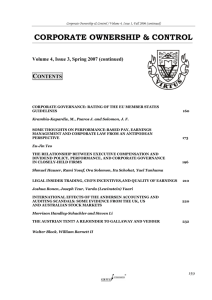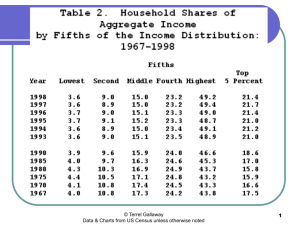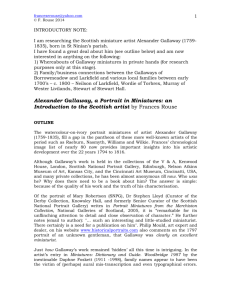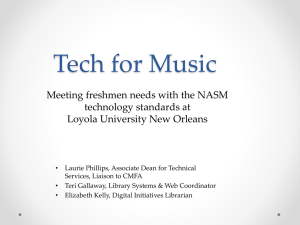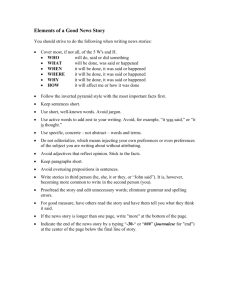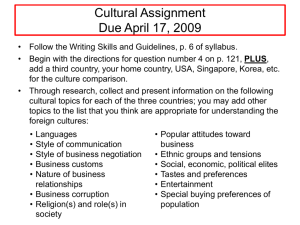Logrolling
advertisement
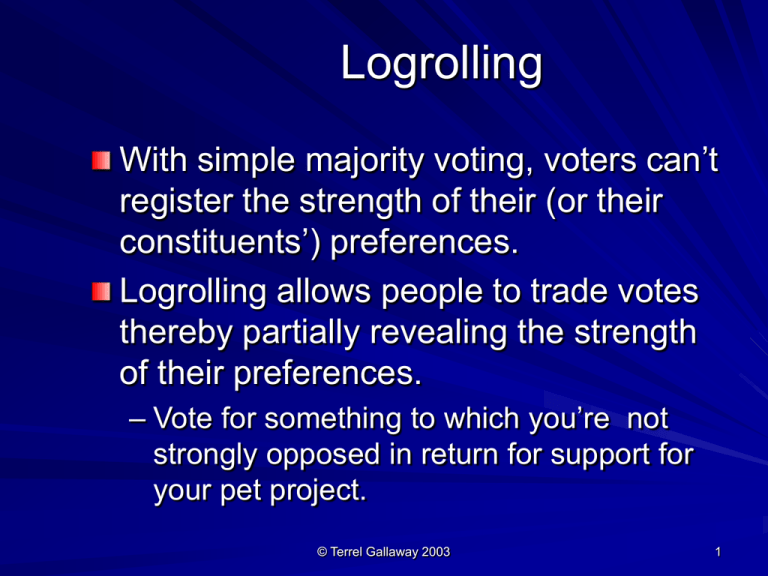
Logrolling With simple majority voting, voters can’t register the strength of their (or their constituents’) preferences. Logrolling allows people to trade votes thereby partially revealing the strength of their preferences. – Vote for something to which you’re not strongly opposed in return for support for your pet project. © Terrel Gallaway 2003 1 Logrolling Pros Cons Voluntary trade can lead to increased efficiency and a stable equilibrium. – (You would expect a net gain for both traders.) Compromise is an essential part of governing May accomaodate pork. The gains to powerful special-interest groups might not ballance the loss to others. Vote trading may reflect relative power and not just strength of preferences. © Terrel Gallaway 2003 2 Improving General Welfare Project School: Total Sue Net. Ben -11 19 Bill 40 Ed -10 Museum: -8 30 -6 16 Park: -24 -12 80 44 © Terrel Gallaway 2003 3 Lowering General Welfare Bill 40 Ed -22 Total Sue Net. Ben -21 -3 Museum: -8 30 -24 -2 Park: -54 -28 80 -2 Project School: © Terrel Gallaway 2003 4 Arrows’ Impossibility Theorem Is there any acceptable way of translating individual preferences into social preferences? Arrow suggested six criteria which a social decision-making rule should satisfy. Turns out that there is no guarantee any decision-making rule can satisfy these criteria. © Terrel Gallaway 2003 5 Arrow’s Criteria: 1) Should produce a decision whatever voters’ preferences. 2) Should rank all possible choices. 3) Should be responsive to individuals’ preferences. 4) Should be consistent (transitive). 5) Choices should be independent from irrelevant alternatives. 6) There should be no dictatorship. © Terrel Gallaway 2003 6 Representative Democracy Economists’ models are based on maximizing. Voters seek to maximize Utility Politicians seek to maximize votes. – If voters’ preferences are signal-peaked and unidimensional, the vote-maximizing politician will adopt the agenda of the median voter. Two-party systems will be stable near the center. Direct referenda and a representative system will yield the same results. © Terrel Gallaway 2003 7 Public Employees The salaries, prestige, office size, etc. of bureaucrats may depend on the size of their bureaucracies. Maximize size of bureaucracy where TB = TC, rather than maximizing net benefits where MB = MC. Results in an inefficiently large bureaucracy. Analogous to revenue maximizer vs. profit maximizer. © Terrel Gallaway 2003 8 Special Interest Groups May be based on: – capital versus labor interests, career fields, size of income, age, religion, race, gender, region, etc. Like Bureaucrats, they may have disproportionate power because they are well organized and armed with information. (there are no organizations like the Non-Truckers of America.) © Terrel Gallaway 2003 9 Controlling Size of Government Large size of government does not necessarily mean it is too large. Balanced Budget Amendment? – Most economists, liberal and conservative, think its a bad idea. More politically acceptable than cutting spending or raising taxes; but in itself, does nothing. Would have to be based on forecasts which might be wrong. Doesn’t define outlays and receipts. Creative accounting could be used to circumvent the law. Would we throw congress in jail ? Let the courts determine the budget? © Terrel Gallaway 2003 10
